Well, I finally got this done! (more or less....) Proof that I occasionally actually make stuff instead of just hanging around online and talking about it!
A couple profile shots
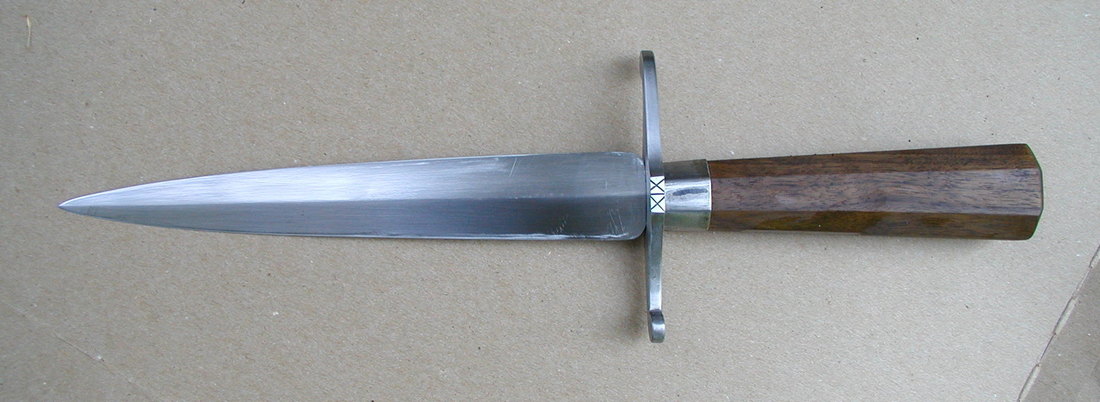
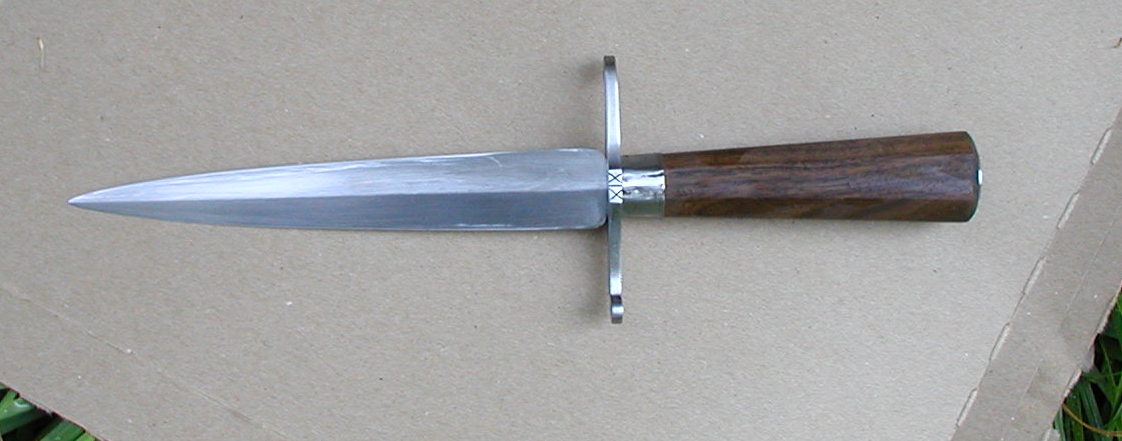
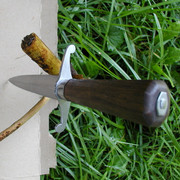
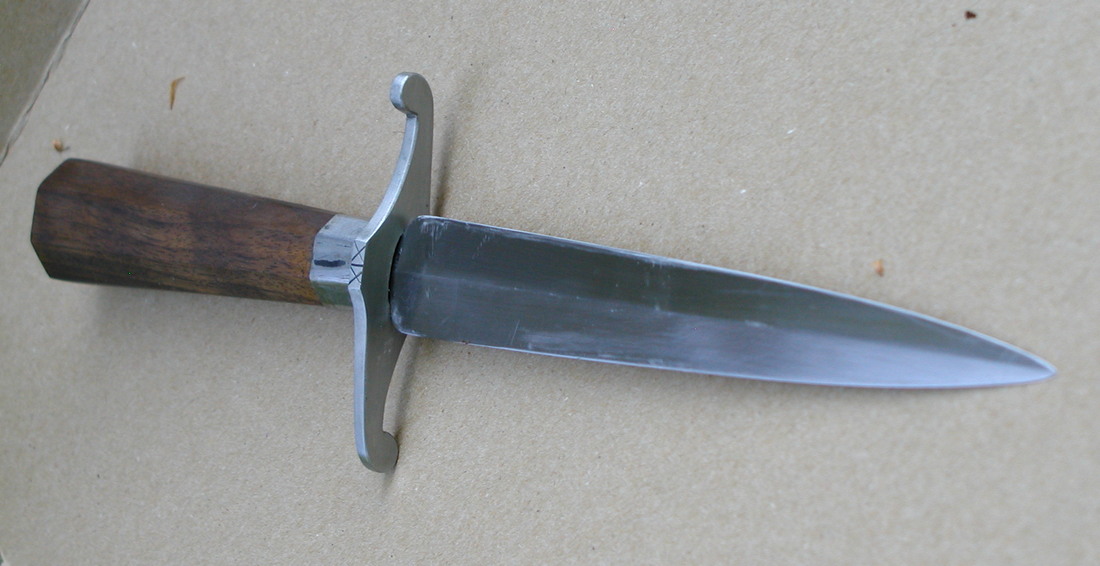
And in its natural habitat...
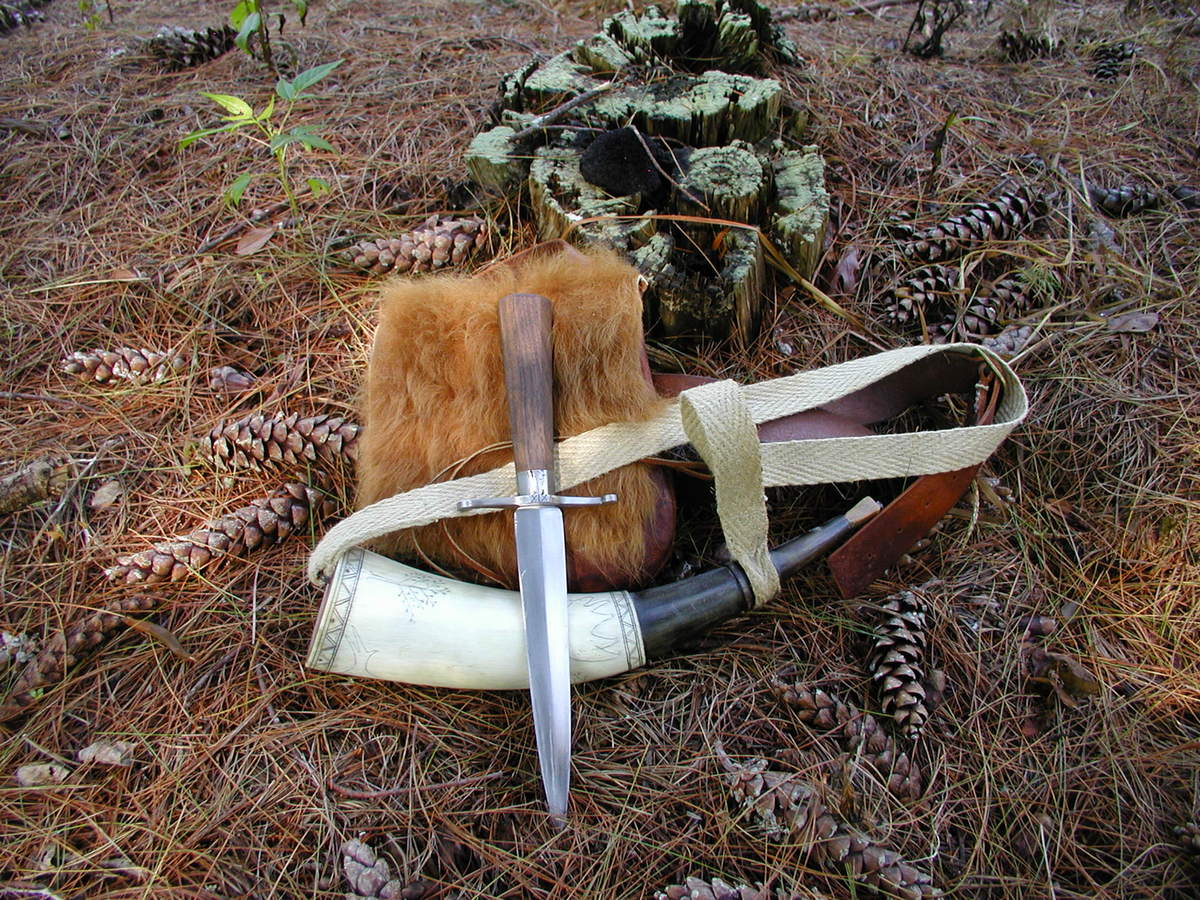
Apologies for my bad photography...As you can probably tell, I haven't mastered the art of sharpening a blade without scratching it up a bit. The scratches are a lot less obvious in person, though.
The blade is just exactly 7 inches long and 1 inch wide, 12" long overall, and balances right at the junction between guard and grip, I think. Blade is made of 1084, the grip of walnut, and the fittings of whatever bits of mild steel I had laying around.
I made this as something of a commentary on the big "riflemen's knives" with guard and antler handle that are ubiquitous these days. As I'm sure most folks know, despite their popularity among modern reenactors there are very few blacksmith-made knives that can be proven to date to the 18th century and none of them bear any resemblence to the modern version....On the other hand, there are some daggers that survive from the period, so if one just can't live without a big fighting knife with a handguard then a dagger offers a PC and oft-overlooked alternative. I honestly doubt that they were all that common either, but they did exist.
It based primarily on the example in Gordon Minnis' American Primitive Knives, plate 27 (page 49), also illustrated on page 156 of Johnstone's Accouterments III, with some influence from 18.K in Neumann's Swords and Blades and BK.1 in Madison Grant's The Knife in Homespun America (which I think is actually 19th century). The vision in my head was for this to represent a dagger made sometime around 1775-1785 in SW Virginia or Tennessee and reflecting the taste for iron mounts and walnut stocks for rifles that was just getting started around that time and place - it was kind of intended as a companion piece for an as-of-yet unbuilt proto-mountain rifle. Like rifles, early daggers tend to be fairly well made, not crude, and the first wave of settlers were not poverty stricken the way some of the later ones would be, so this is intended to be workmanlike, with a bit of attention to making a nice piece. I shaped it by eye and some basic measuring tools, though, and while I did my best to keep it straight and symmetrical I didn't worry unduly about little irregularities. Whether that was the right approach I'll have to leave for y'all to decide - I like the fact that it doesn't look too crisp (a lot of modern made "primitive" knifes are over-finished, IMHO), but there are areas that I wish I had gotten a bit better.
On a personal level, this was my first double-edge blade, my first knife with a hilt, my first attempt at making a ferrule, and my first knife with a through tang peened at the end. Quite a step up in complexity from the sheath knives I previous made! I ended up making every piece of the knife at least twice, including the blade, and I can think of several things that I want to do differently the next time around, mostly relating to the shape of the tang and the fit of the handle and guard to the tang. Lots of room for improvement yet. One of the nice things about making a "frontier knife" though, is that a bit of roughness is forgiveable....
Now I need to make a sheath for it.
A couple profile shots




And in its natural habitat...

Apologies for my bad photography...As you can probably tell, I haven't mastered the art of sharpening a blade without scratching it up a bit. The scratches are a lot less obvious in person, though.
The blade is just exactly 7 inches long and 1 inch wide, 12" long overall, and balances right at the junction between guard and grip, I think. Blade is made of 1084, the grip of walnut, and the fittings of whatever bits of mild steel I had laying around.
I made this as something of a commentary on the big "riflemen's knives" with guard and antler handle that are ubiquitous these days. As I'm sure most folks know, despite their popularity among modern reenactors there are very few blacksmith-made knives that can be proven to date to the 18th century and none of them bear any resemblence to the modern version....On the other hand, there are some daggers that survive from the period, so if one just can't live without a big fighting knife with a handguard then a dagger offers a PC and oft-overlooked alternative. I honestly doubt that they were all that common either, but they did exist.
It based primarily on the example in Gordon Minnis' American Primitive Knives, plate 27 (page 49), also illustrated on page 156 of Johnstone's Accouterments III, with some influence from 18.K in Neumann's Swords and Blades and BK.1 in Madison Grant's The Knife in Homespun America (which I think is actually 19th century). The vision in my head was for this to represent a dagger made sometime around 1775-1785 in SW Virginia or Tennessee and reflecting the taste for iron mounts and walnut stocks for rifles that was just getting started around that time and place - it was kind of intended as a companion piece for an as-of-yet unbuilt proto-mountain rifle. Like rifles, early daggers tend to be fairly well made, not crude, and the first wave of settlers were not poverty stricken the way some of the later ones would be, so this is intended to be workmanlike, with a bit of attention to making a nice piece. I shaped it by eye and some basic measuring tools, though, and while I did my best to keep it straight and symmetrical I didn't worry unduly about little irregularities. Whether that was the right approach I'll have to leave for y'all to decide - I like the fact that it doesn't look too crisp (a lot of modern made "primitive" knifes are over-finished, IMHO), but there are areas that I wish I had gotten a bit better.
On a personal level, this was my first double-edge blade, my first knife with a hilt, my first attempt at making a ferrule, and my first knife with a through tang peened at the end. Quite a step up in complexity from the sheath knives I previous made! I ended up making every piece of the knife at least twice, including the blade, and I can think of several things that I want to do differently the next time around, mostly relating to the shape of the tang and the fit of the handle and guard to the tang. Lots of room for improvement yet. One of the nice things about making a "frontier knife" though, is that a bit of roughness is forgiveable....
Now I need to make a sheath for it.





